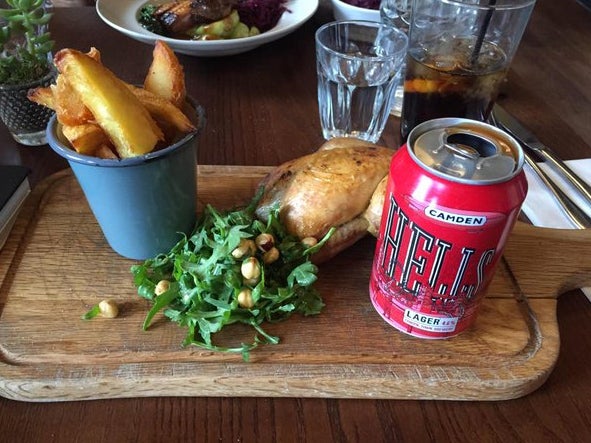People hate wacky restaurant plate gimmicks – but they may make your meal more memorable
Ad taking a photo of your food may also make it taste better

The past few years have seen an explosive rise in the popularity of food being plated in ever stranger and more unusual ways. What started with the world’s top modernist restaurants serving food from flowerpots (Noma, Copenhagen) and off plates resembling the seashore (The Fat Duck, Bray) has now percolated through to the local gastropub and cocktail bar. Take a trip out to the latter and you may well find your dinner served on a flat cap or shovel or your drink presented in a Wellington boot.
But, enough is enough, I hear you say. This new trend in exotic plating is getting to be too much. Indeed, a few years ago, Masterchef judge William Sitwell started a campaign for people to send him their square plates, so that he could dispose of them. According to the food critic: “No food should be served on a plate with a right angle”.
A recent YouGov survey suggests that Sitwell is not alone in his desire for a return to the large round white American plate, with only one in ten of us being happy to be served our dinner in a dog bowl or shoe. There is even a Twitter feed called @WeWantPlates.
Now, I am the first to admit that some overenthusiastic practitioners may have taken this new trend in unusual plating a little too far. Nevertheless, I think that it is worth pausing for a moment to consider just how much influence the plateware really has on the dining experience.
The answer, it turns out, at least according to the research is: more than you think. Plateware not only affects how beautiful a dish looks but it can also influence what the food tastes like, too. For instance, working together with Ferran Adrià’s Alicia Foundation in Spain back in 2012, we found that people rated the same pinkish strawberry mousse as tasting 7 per cent sweeter, 13 per cent more flavourful and 9 per cent more liked when served off a white plate than off a black plate.
Subsequently, Canadian scientists Peter Stewart and Erica Goss went on to demonstrate that the shape of the plate (round as opposed to square) also affected people’s liking of a piece of cheesecake as well as their ratings of its sweetness and flavour intensity.
But it is not just the colour and shape of the plateware that matter. Research published last year revealed that ginger biscuits served from a sandpaper-rough plate were rated as tasting significantly crunchier and spicier (that is, more gingery) than when the same biscuits were served from a smooth plate.
Eating with your eyes (or lens)
Many British diners are now apparently unable to resist taking a picture of their food (and that normally includes the plateware) when they go out to eat. At the same time, sites like The Art of Plating have become phenomenally popular. But why? On the one hand, it is clear that many chefs are deliberately trying to create more photogenic dishes because of all the free publicity that such a dish will receive. As one restaurant consultant put it: “I’m sure some restaurants are preparing food now that is going to look good on Instagram.”
Plating beautifully and artistically obviously helps here but it turns out that much the same effect can be achieved simply by plating the food in an idiosyncratic manner – by using unusual plateware.
I certainly still remember the occasion five years ago when chef Ben Spalding served a chicken liver cream at John Salt restaurant in Islington, North London from atop a caramel-encrusted brick. Indeed, when you pay a lot of money for a fancy meal out, you would hope to leave with some lasting memories.
But when most people are asked several weeks after a fancy meal what they remember of the food, the answer tends to be “not much”. It is interesting to note therefore that those who take pictures of their food are able to remember it better later than those who don’t. And, what is more, an indulgent dish will apparently taste more delicious if you take a picture of it first.
So given the benefits associated with plating beautifully, I would have to argue against a return to the boring American plate. For all I care, William Sitwell and his ilk can send me all their old-fashioned large, round, white plates and I’ll dispose of them as I see fit. To my way of thinking (as a gastrophysicist), for those who have the time or inclination, the plateware should really be chosen to enhance the diner’s experience of the dish, and shouldn’t just be thought of as a blank white canvas on which to place the food.
And one should never forget that – love it or hate it – these days getting your guests to take a picture of your dish or drink (and then share it on their social media) really is the name of the game.
Charles Spence is a professor of experimental psychology and lecturer at the University of Oxford. This article was originally published on The Conversation (theconversation.com)
Subscribe to Independent Premium to bookmark this article
Want to bookmark your favourite articles and stories to read or reference later? Start your Independent Premium subscription today.

Join our commenting forum
Join thought-provoking conversations, follow other Independent readers and see their replies